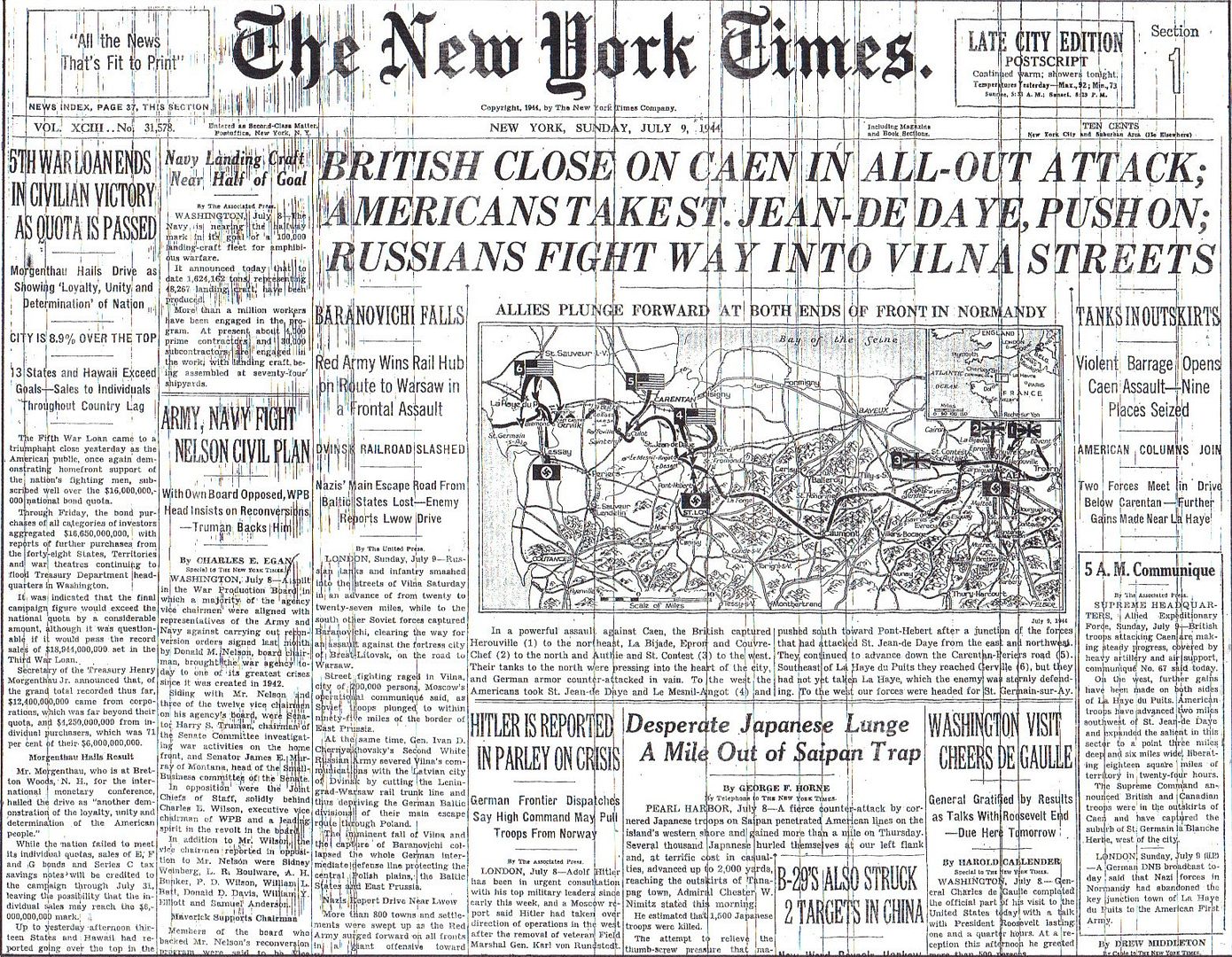
Posted on 07/09/2014 5:08:42 AM PDT by Homer_J_Simpson

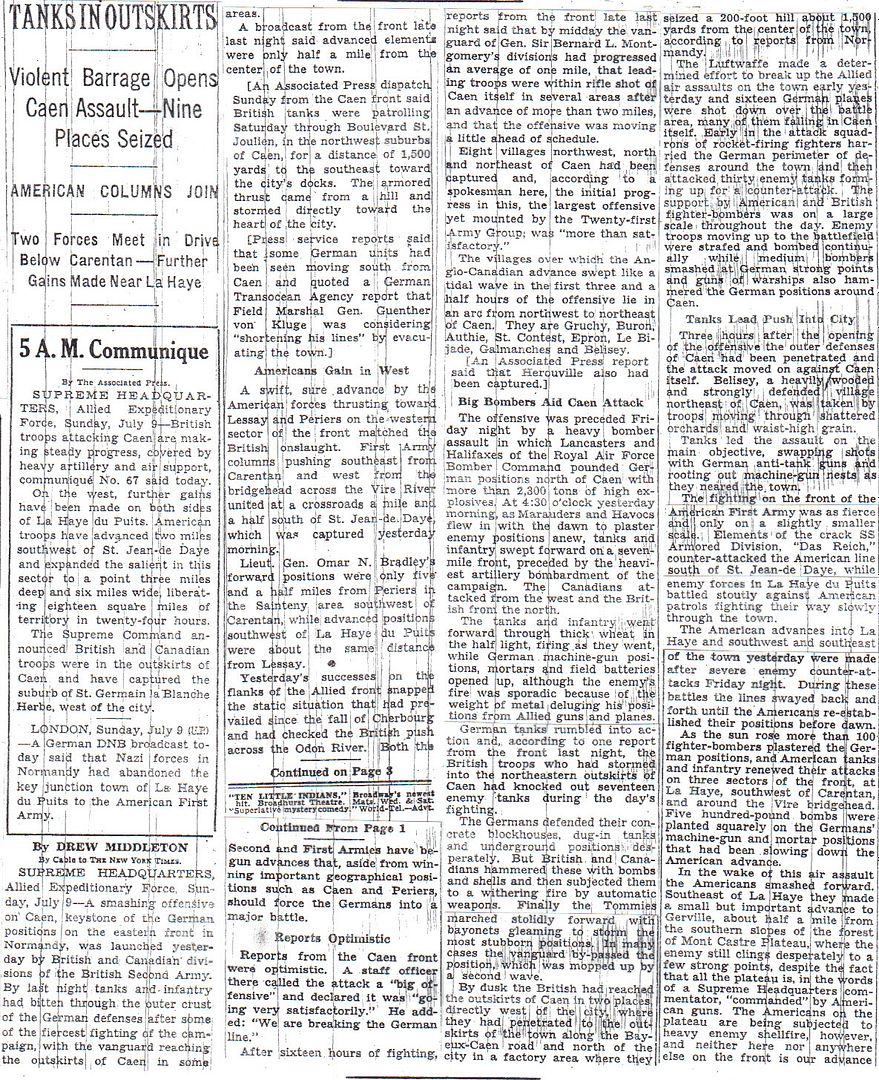


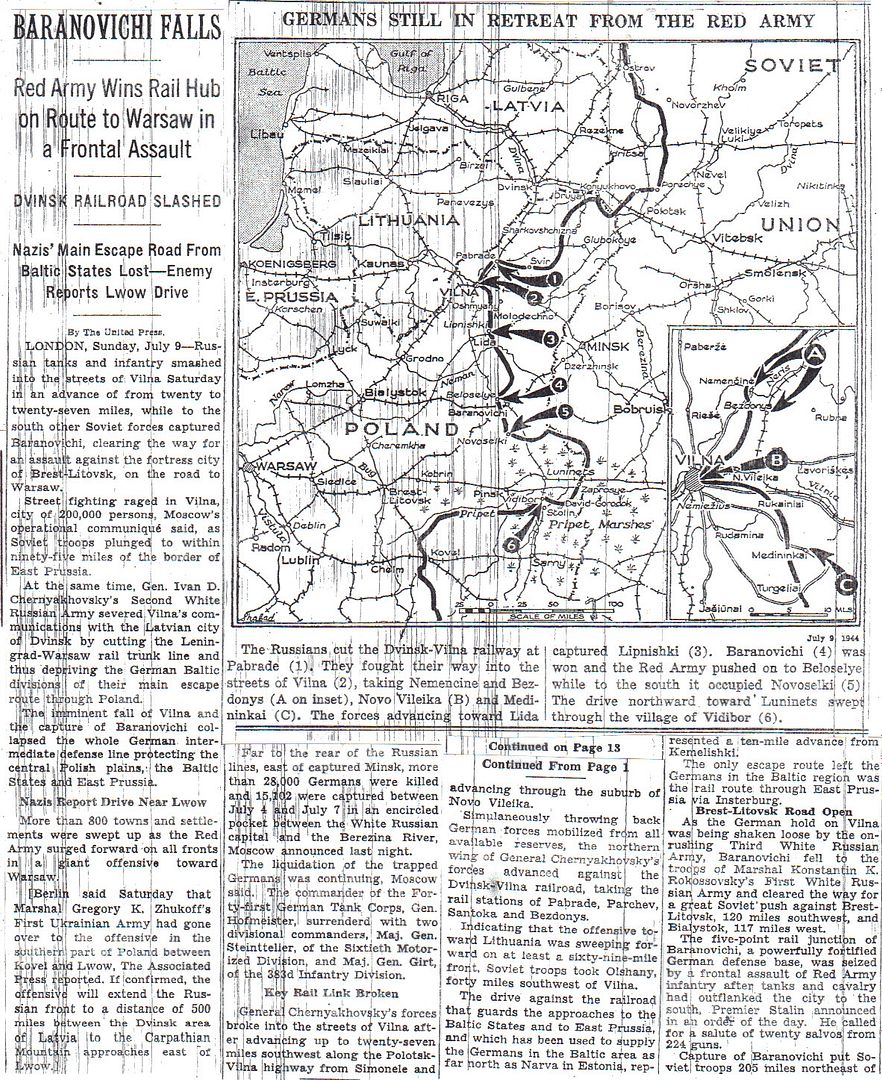
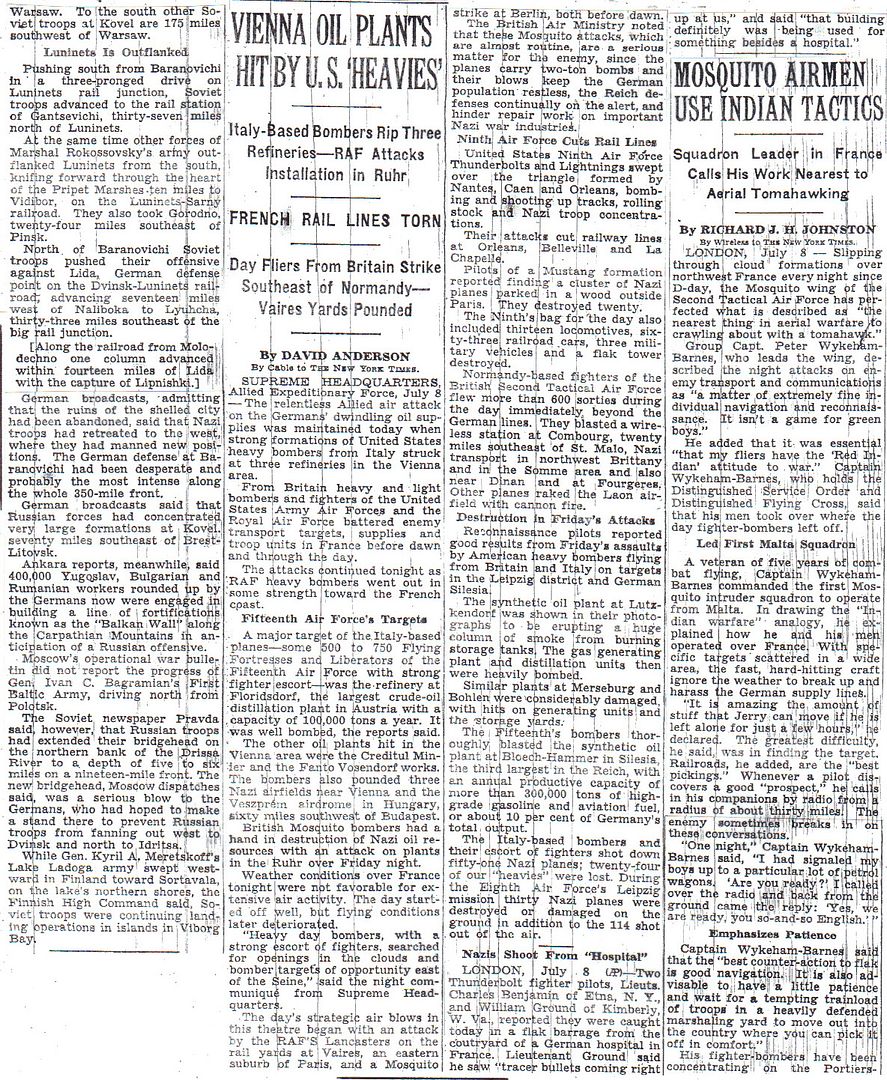
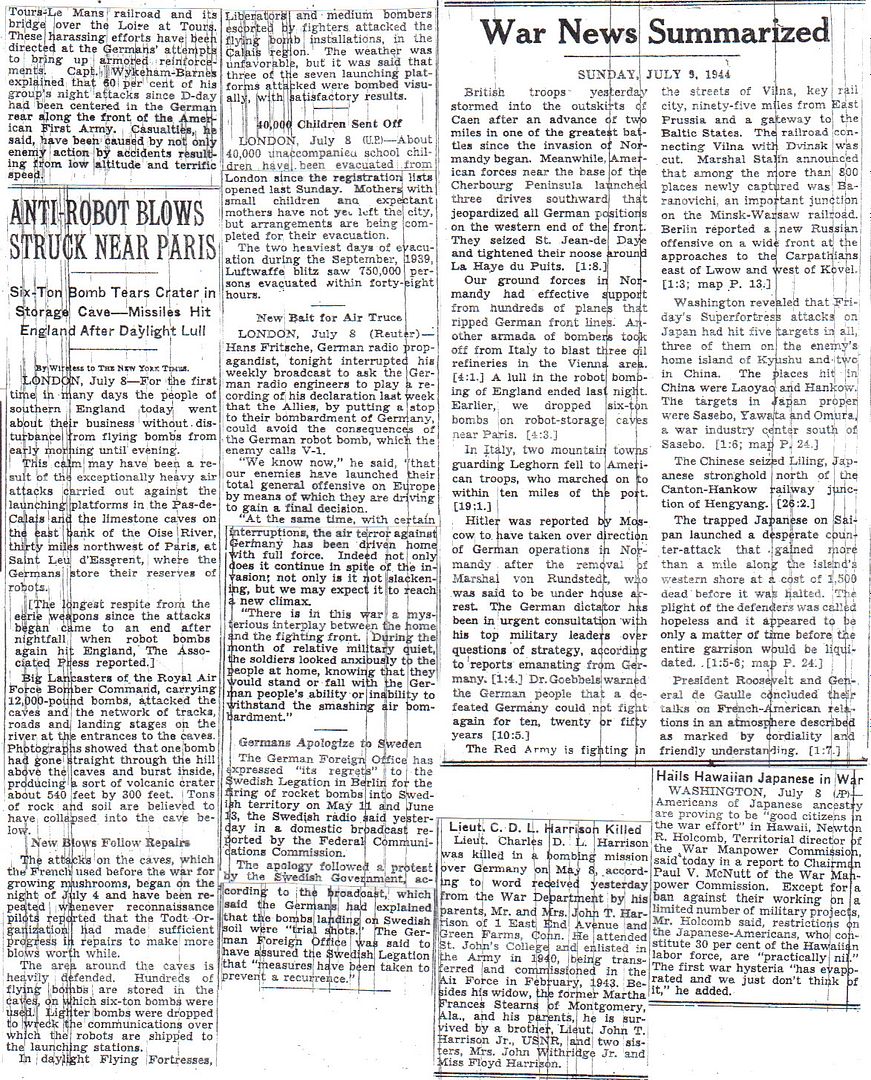
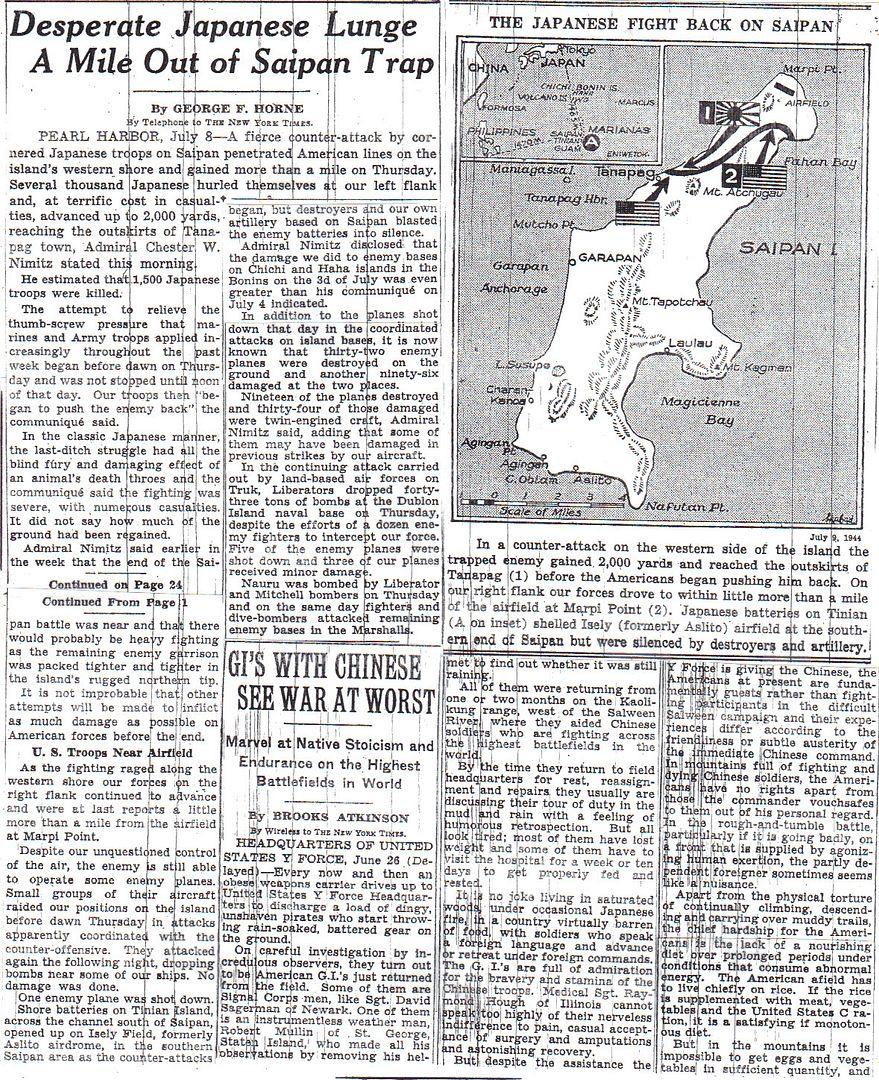
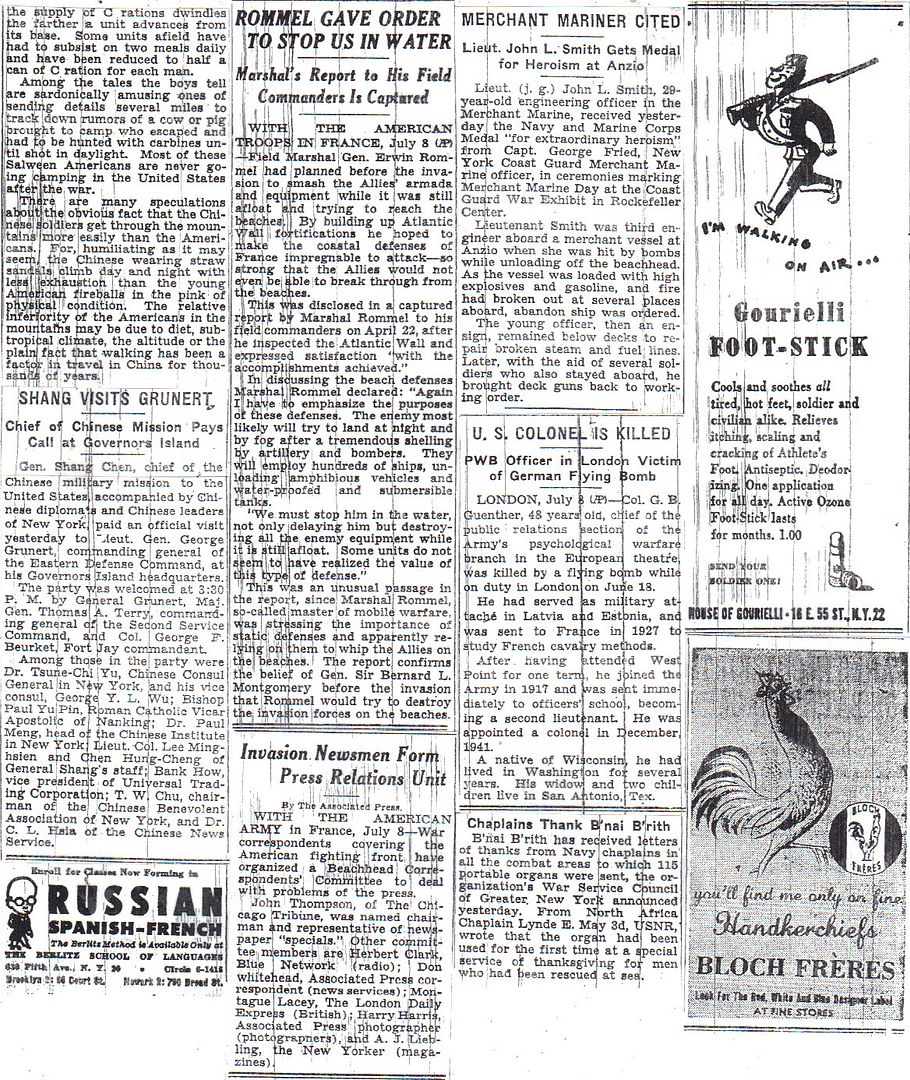
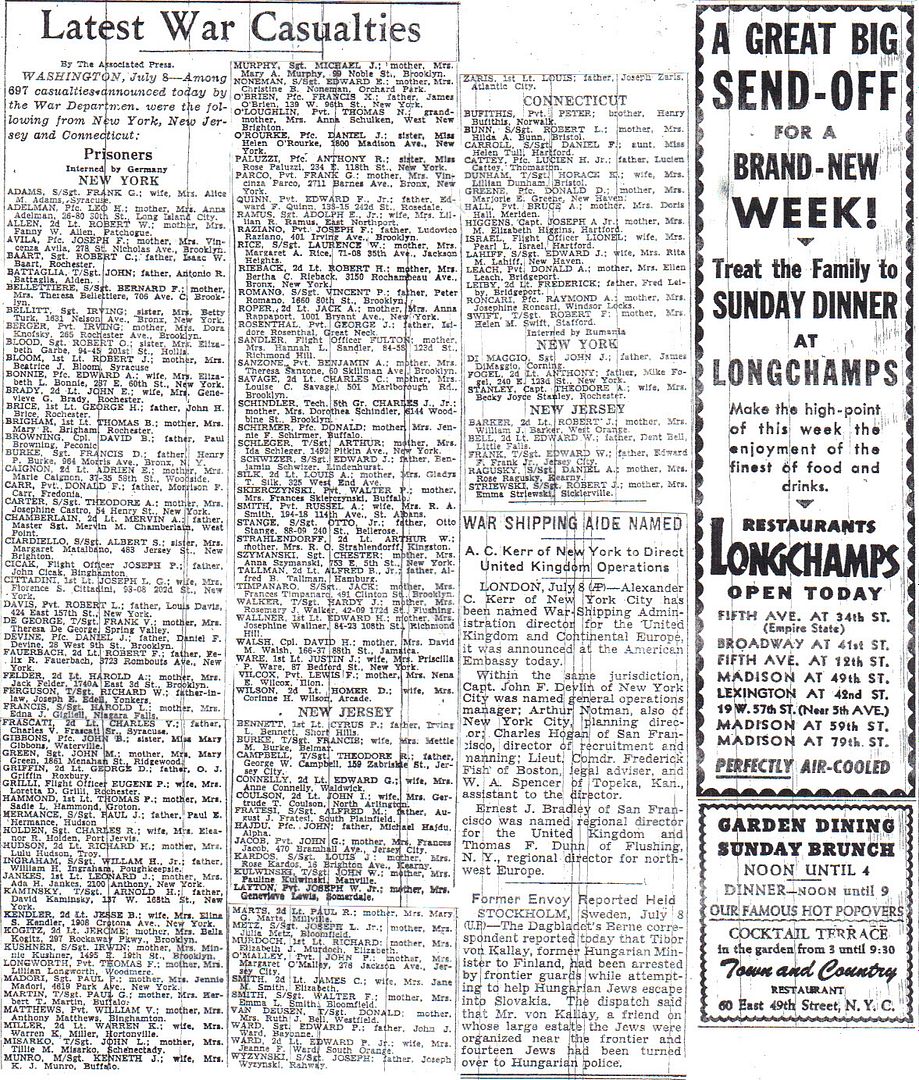
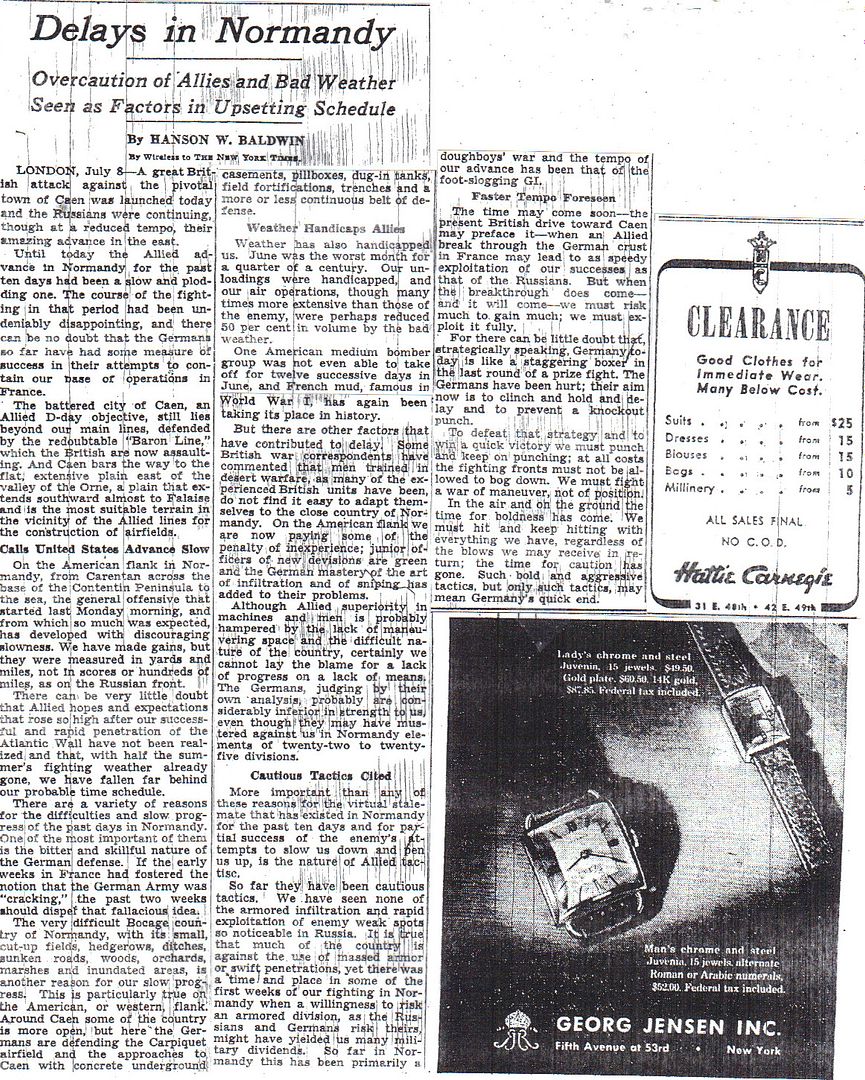

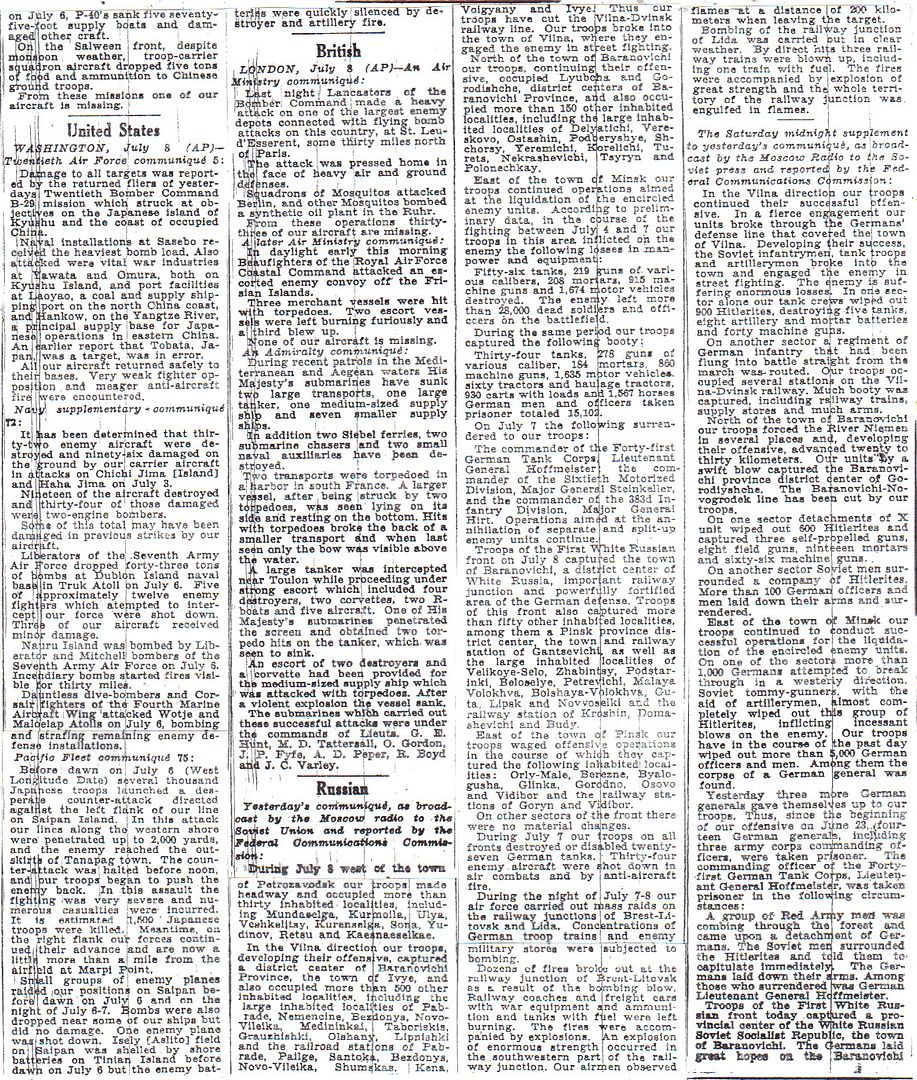

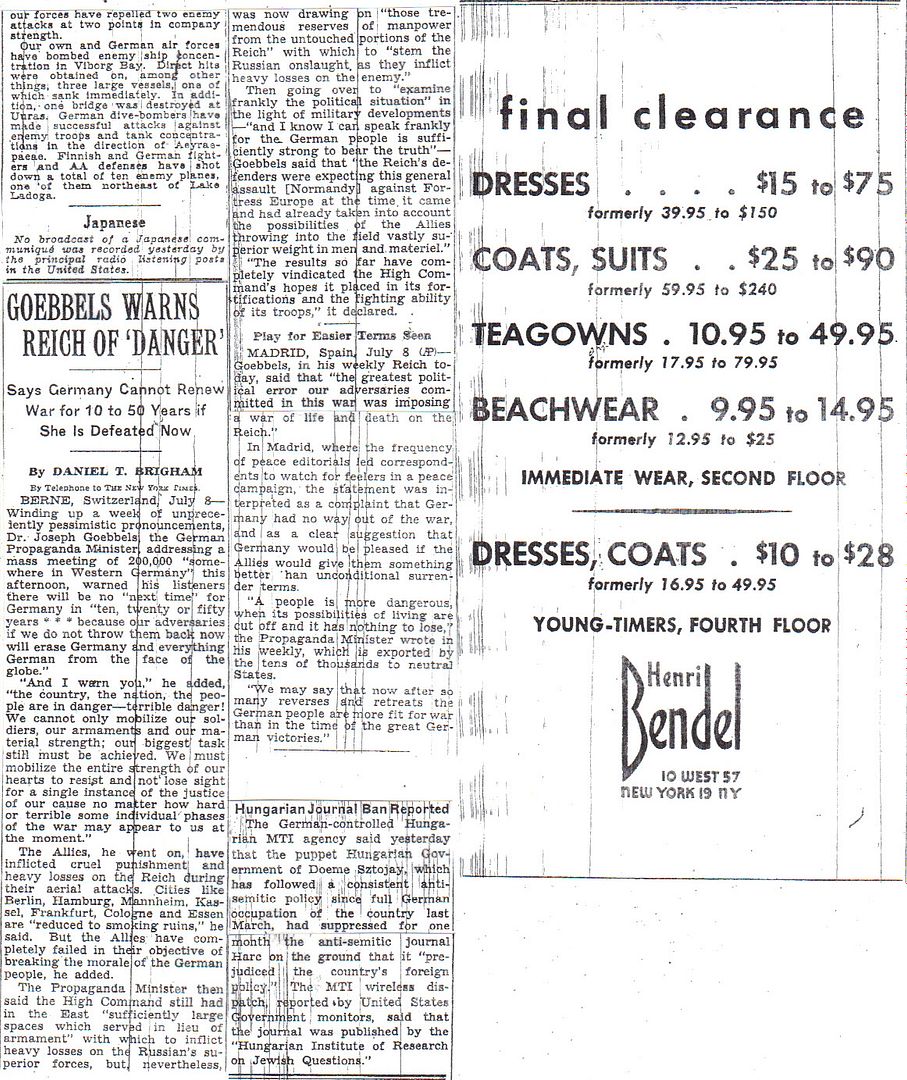
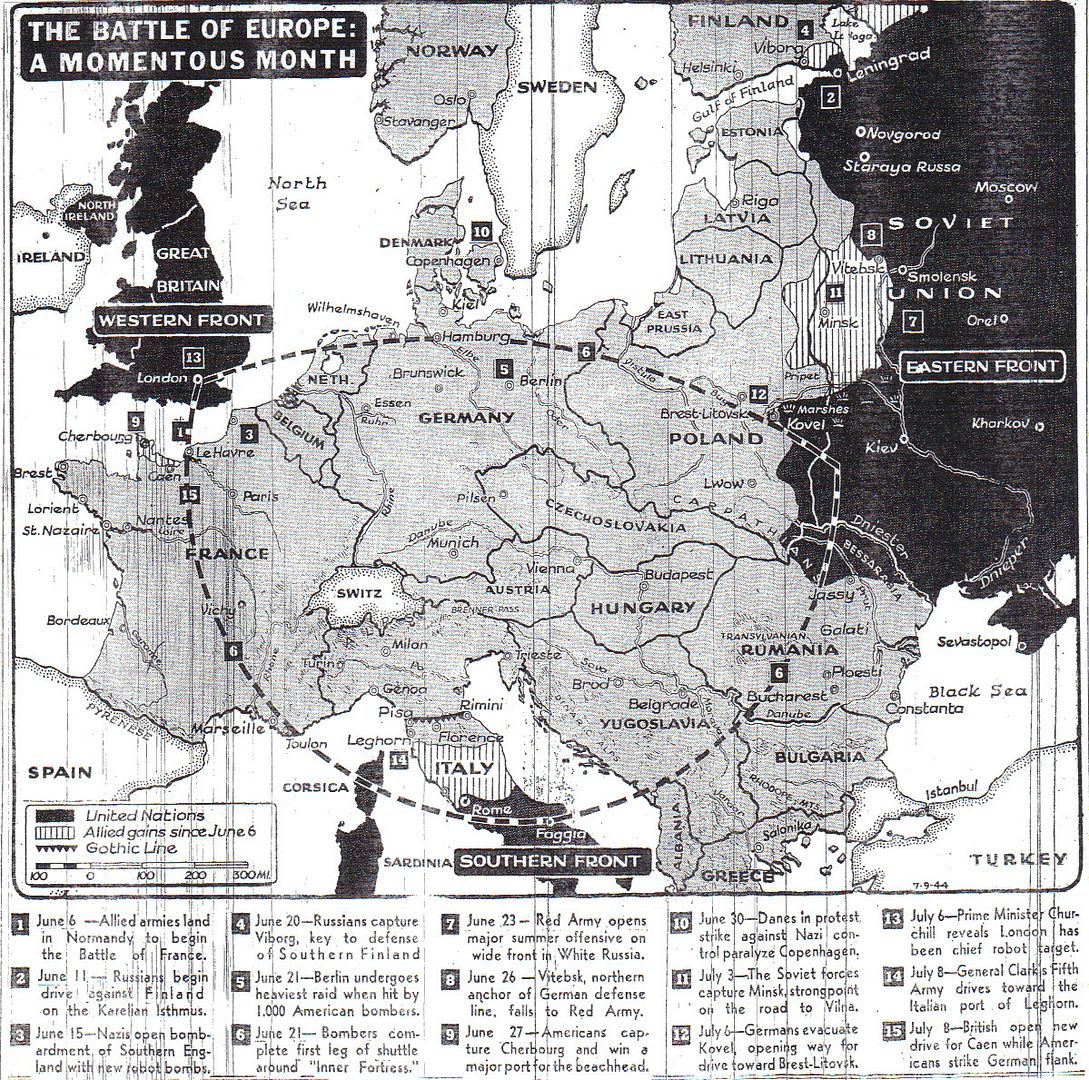
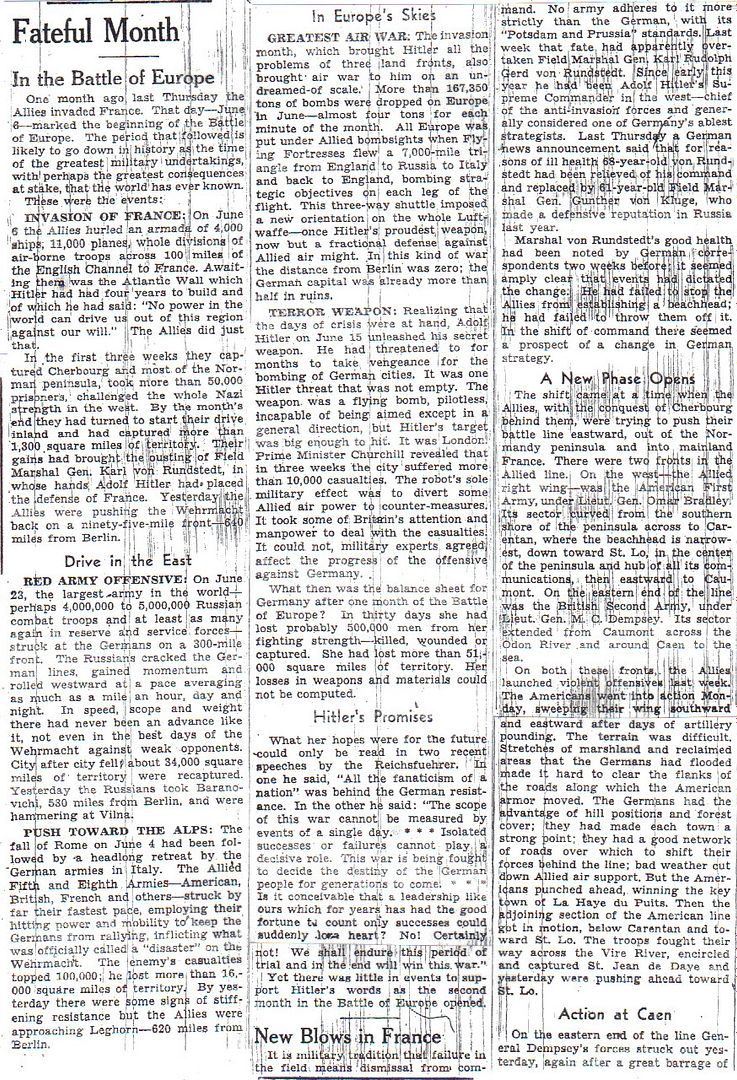
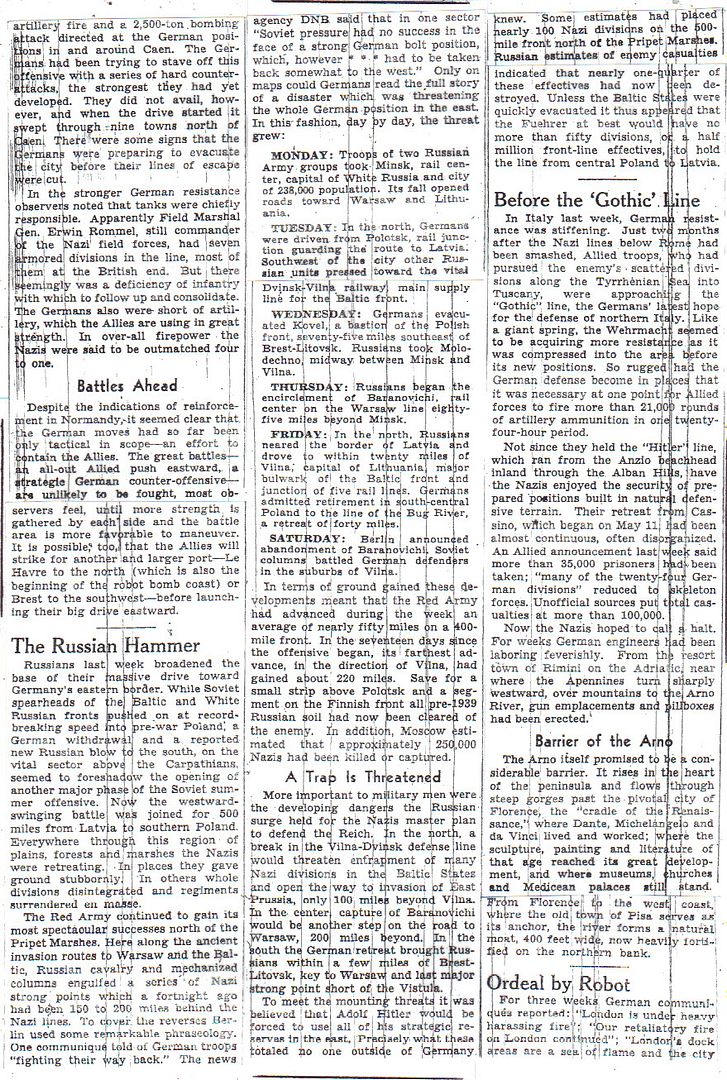
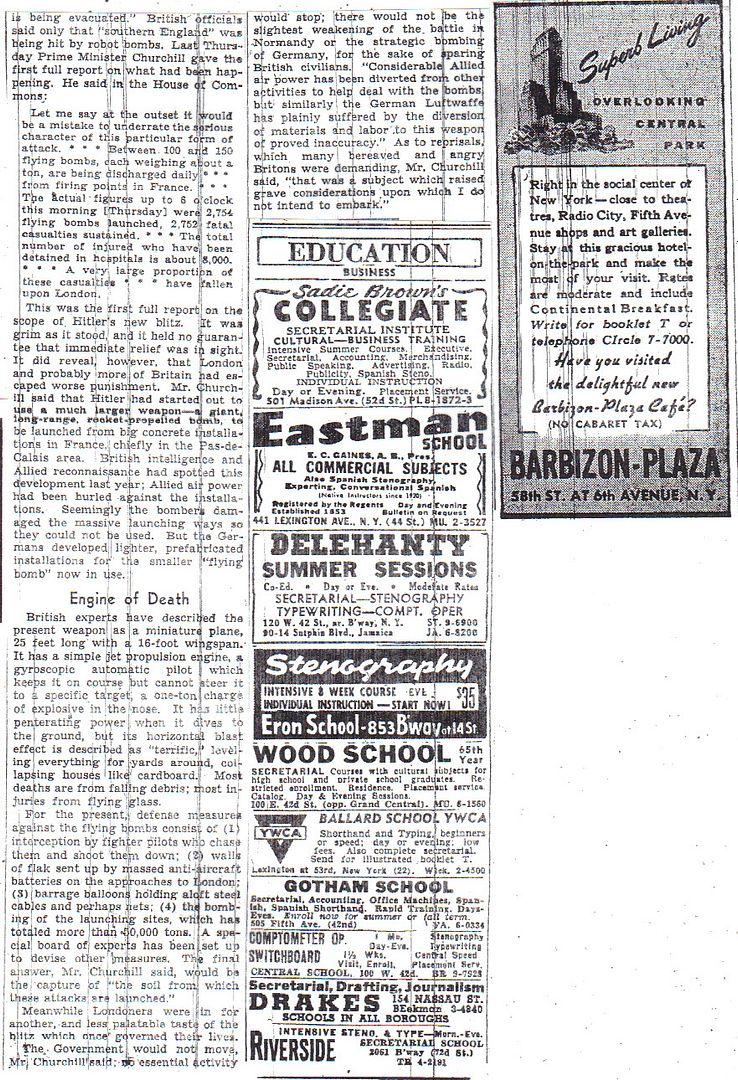
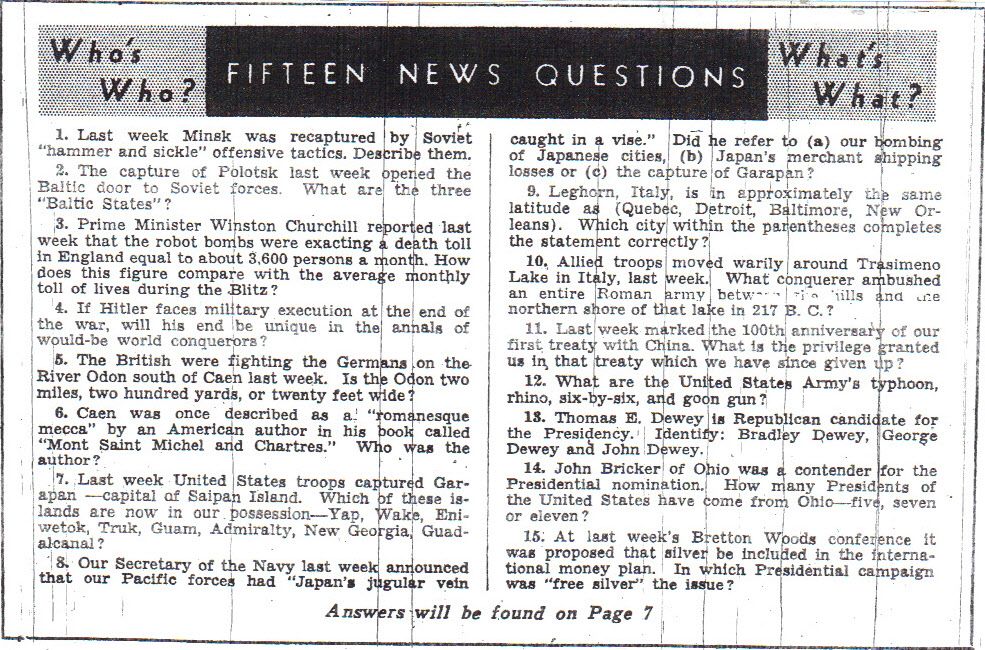
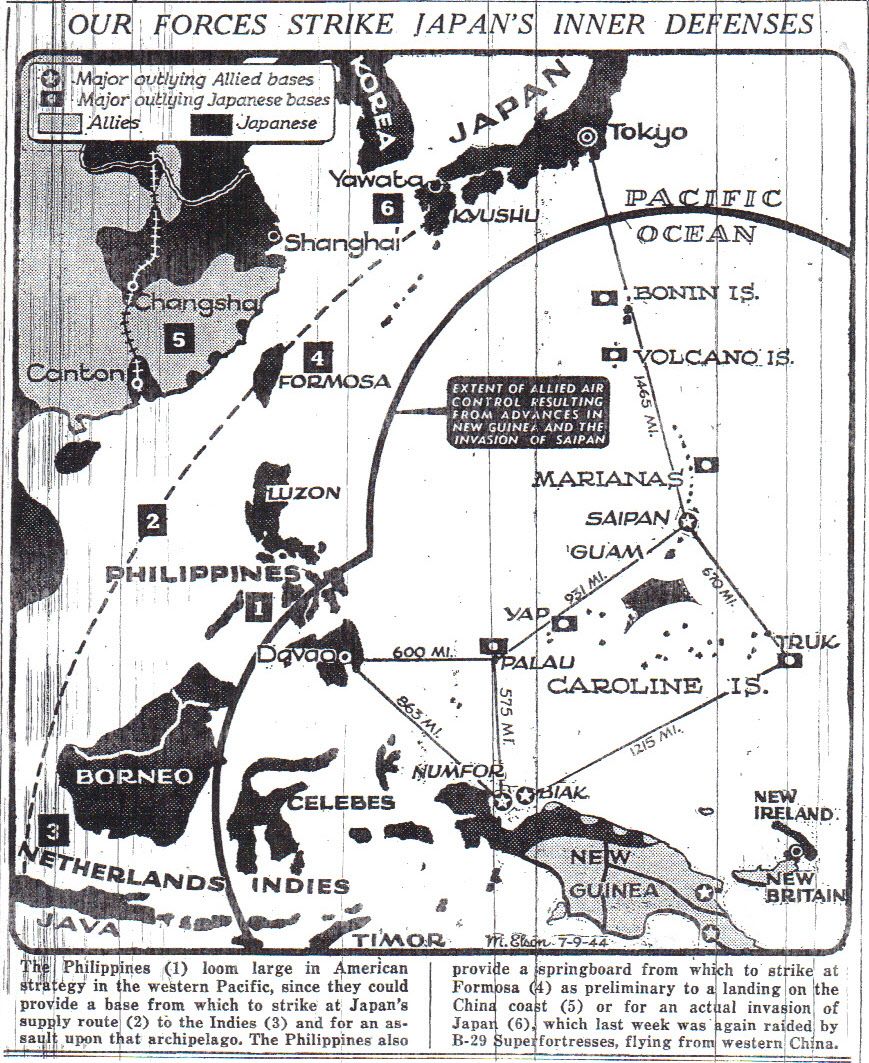
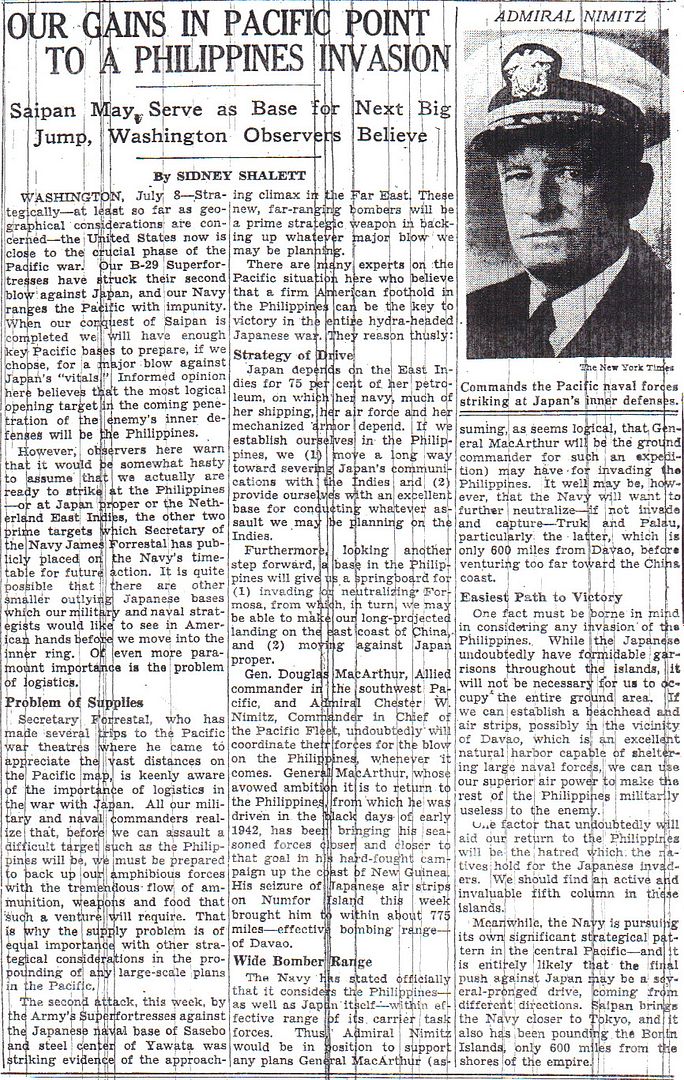
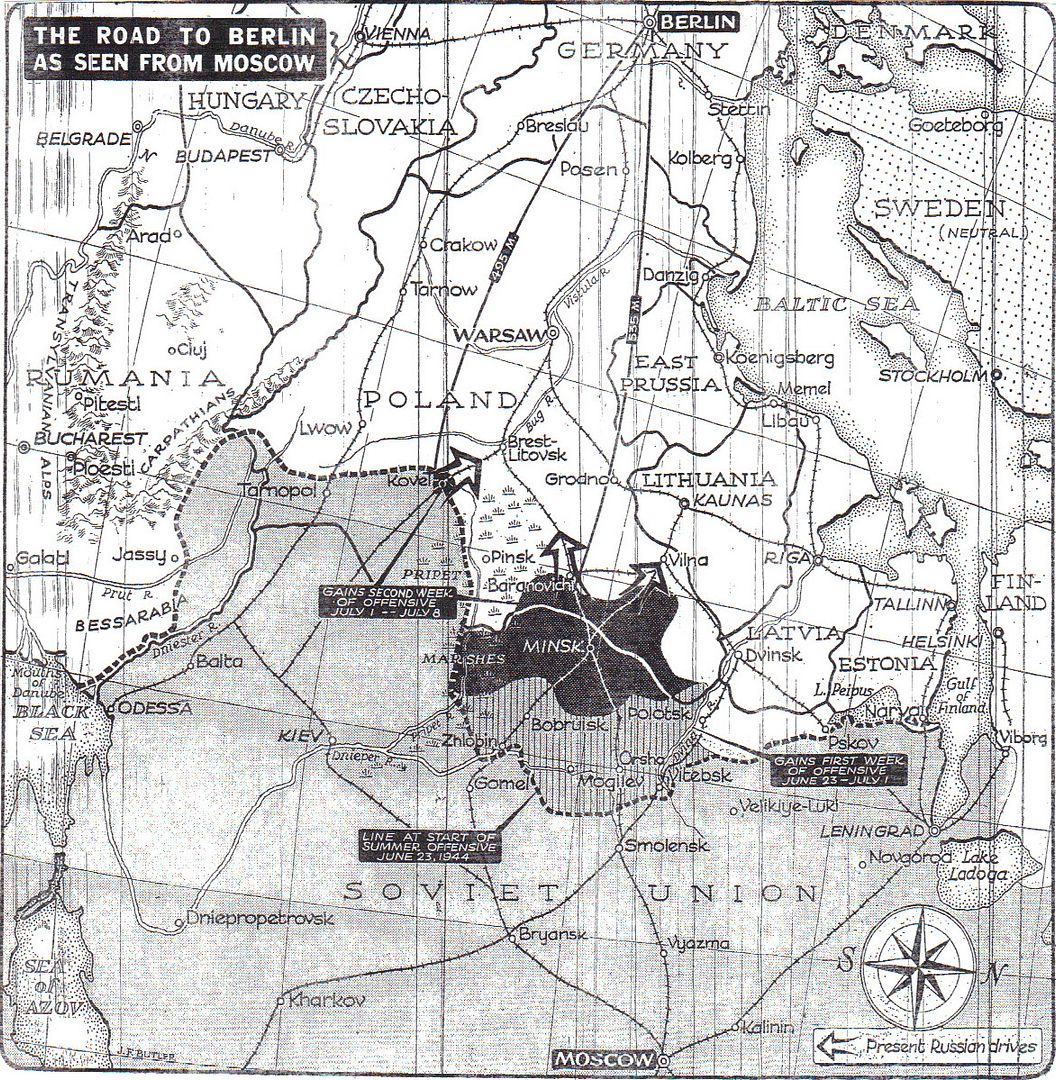
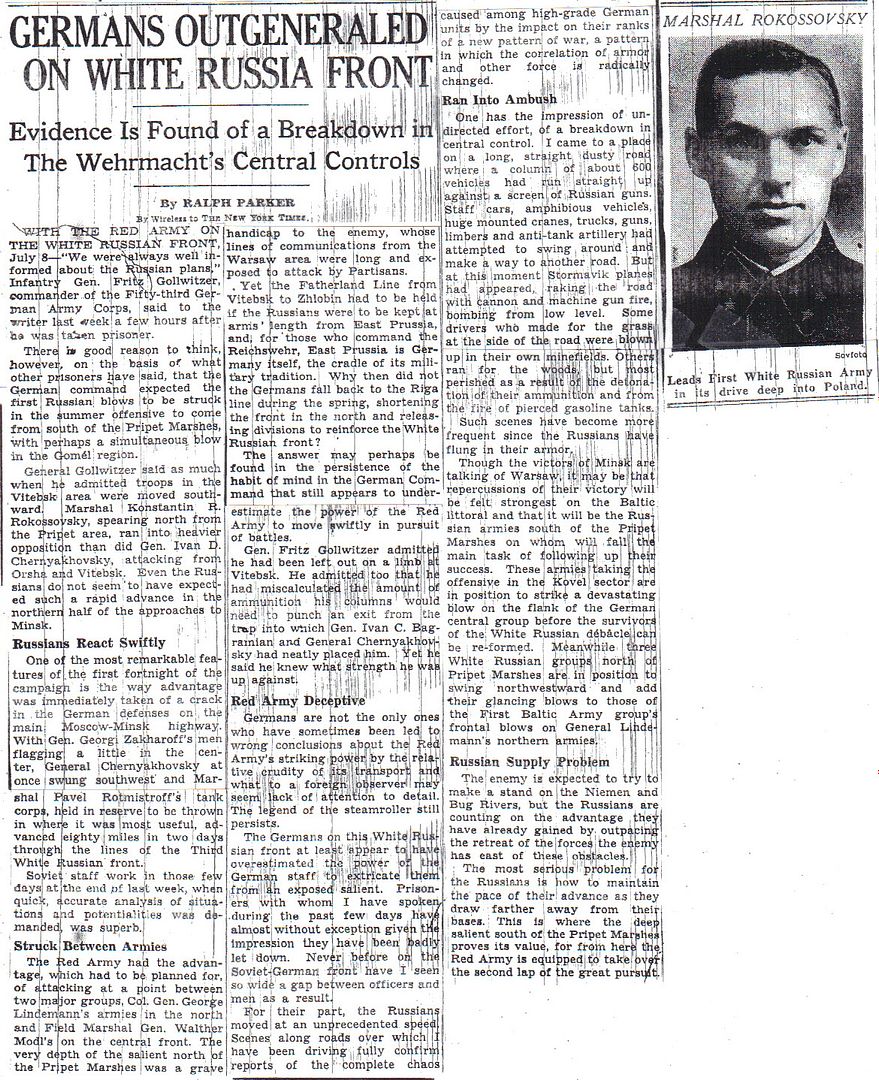
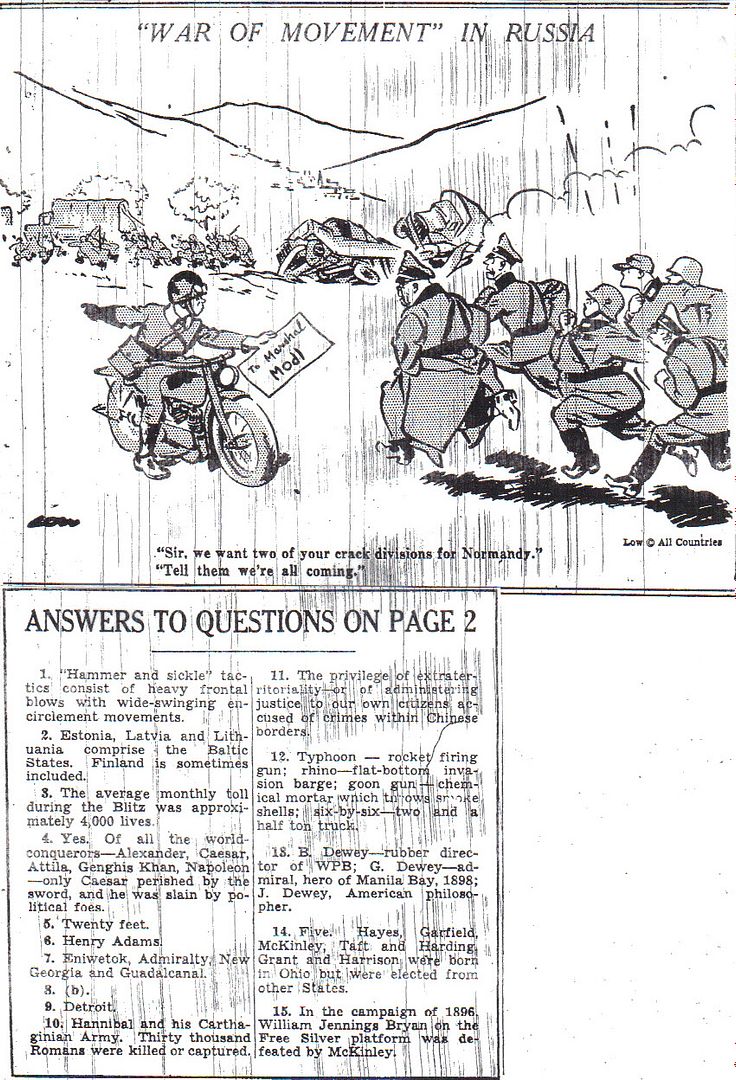
BBC-Frank Gillard reports near Caen

The News of the Week in Review
The Battle of Europe: A Momentous Month (map) – 16
Fateful Month – 17-19
Fifteen News Questions – 20
Our Forces Strike Japan’s Inner Defenses (map) – 21
Our Gains in Pacific Front Point to a Philippines Invasion (by Sidney Shalett) – 22
The Road to Berlin as Seen from Moscow (map) – 23
Germans Outgeneraled on White Russia Front (by Ralph Parker) – 24
“War of Movement” in Russia (cartoon) – 25
Answers to Fifteen News Questions – 25
http://www.onwar.com/chrono/1944/jul44/09jul44.htm#
British army penetrates Caen
Sunday, July 9, 1944 www.onwar.com
Members of the British 2nd Army penetrate Caen [photo at link]
On the Western Front... Forces of British 2nd Army penetrate Caen. Forces of Canadian 3rd Division and British 1st Division capture most of the city north of the Orne River. Canadian forces also take Carpiquet Airfield. The US 1st Army continues attacks toward St. Lo.
In Italy... Elements of US 5th Army advance. The US 88th Division captures Volterra and elements of the French Expeditionary Corps reach Poggibonsi.
On the Eastern Front... Soviet forces of 3rd Belorussian Front capture Lida, 50 mile east of Grodno. Farther north, Soviet forces reach the outskirts of Vilna in Lithuania.
In the Mariana Islands... On Saipan, US forces reach Point Marpi and the last organized Japanese resistance is overcome. An estimated 27,000 Japanese have been killed and 1780 are prisoners, both figures include civilians. US forces have lost 3400 killed and 13,000 wounded.
In Washington... Free French President de Gaulle continues talks with American representatives.
In the United States... The Bretton Woods conference continues.
http://www.etherit.co.uk/month/thismonth/09.htm
July 9th, 1944 (SUNDAY)
UNITED KINGDOM: The Eight Air Force in England flies three missions.
- Mission 462: during a morning mission 150 B-17s are dispatched to bomb bridges and airfields in France but cloud cover causes the bombers to hit targets of opportunity; 68 hit Chalonnes Bridge, 36 hit Chateaudun Airfield, 12 hit Bouchemaine Bridge, 12 hit Chalonnes highway bridge and 12 hit Le Creusot Bridge; 1 B-17 is lost and 10 damaged. Escort is provided by 155 P-47s and P-51s; 1 P-47 and 1 P-51 are lost.
- Mission 463: 104 B-24s and 77 B-17s are dispatched to hit CROSSBOW (V-weapon) sites in France but encounters poor weather; Only 37 B-24s bomb V-weapon sites; 12 B-17s hits St. Omber Longuenesse airfield and three hit targets of opportunity; 1 B-24 is lost and 60 damaged. Escort is provided by 158 P-47s and P-51s; they claim 5-0-3 Luftwaffe aircraft.
90 P-38 Lightnings strafe the Moulin-Nevers-Tours area claiming 1-0-1 Luftwaffe aircraft; a P-38 is lost .
- Mission 464: During the night, 5 B-17s drop leaflets in France.
37 B-24s fly CARPETBAGGER missions during the night.
The band leader Glenn Miller gives the first concert of his British tour.
FRANCE: 3rd Canadian and 1st British Division enter Caen and the Carpiquet Airfield.
Caen: Criticism of Montgomery’s handling of operations in the Caen sector has been growing since the failure of repeated attempts to break out into open country. The Britons and Canadians of Dempsey’s Second Army remain stalled at the river Orne inside Caen, with the Germans still holding Bourgebus Ridge to the south of the town. Another commanding height, Hill 112, has again be wrested from the enemy, only to be lost in a counter-attack. The high rate of casualties is causing anxiety. After almost four years of war, manpower is running low; this may help to explain Montgomery’s caution.
Against this background, Montgomery’s staff have produced a plan for exploiting the 21st Army Groups four-to-one superiority in tanks over the Germans. A mass attack by 750 tanks is to be mounted east of Caen with the aim of driving towards Falaise: “I have decided the time has come to have a real showdown on the eastern flank,” Montgomery says.
Of 250+ Ninth Air Force B-26s and A-20 Havocs dispatched, bad weather prevails and about 60 bomb targets including a rail bridge, crossing, overpass and a highway bridge at Ablis, Orleans, Vendome, and Montfort-sur-Risle; fighters escort IX Bomber Command bombers, provide area cover over the battle area, and bomb and strafe gun positions, vehicles, rail cars, bridges, and tanks.
Destroyers HMCS Huron and HMS Tartar engaged 4 German armed trawlers off St. Malo, France. The small ships, making only 9 knots, made smoke to screen their movements and set off signal rockets to alert German forces ashore. The trawlers opened a hot fire from their light AA armament (37-mm and 20-mm) and German shore artillery began to shell the two destroyers. Shrapnel soon hit both Tartar and Huron from near misses and Huron suffered two wounded crewmembers. The destroyers withdrew and a subsequent attack by the Canadian 65th MTB Flotilla was also driven off. The 4 German trawlers arrived safely at St. Malo. This engagement shows that, when alerted and ready to defend themselves, the German naval forces were able to mount a credible defence. The odds were not in favour of the Allied formation and the supporting fire from shore batteries completely ‘turned the tables’. The committing of a light force of 2 destroyers against such opposition reveals a failure to properly assess the threat in a joint context, which is a very common fault. The one thing that counts in naval warfare, above all else, is numbers. Although several similar engagements had gone strongly in favour of the allies, they had all been stronger forces and enjoyed a measure of tactical surprise when the battle was opened.
GERMANY:
U-3002 launched.
U-3007, U-3505 laid down.
ITALY: The US 88th Division liberates Volterra, Tuscany. French units advance on Poggibonsi, Italy.
The US 100th Infantry Battalion occupies and controls Leghorn directly under the control of the Fifth Army in Rome. Nisei soldiers of the 100th Infantry Battalion are in Leghorn.
In the Fifteenth Air Force’s first Pathfinder-led mission, 222 B-17s and B-24s bomb Xenia and Concordia Vega oil refineries at Ploesti, Romania; P-38s and P-51s fly escort; other P-51s sweep the Ploesti area during the attacks; the bombers and fighters claim destruction of 14 of the 40-50 opposing fighters; 6 AAF aircraft are shot down.
Minesweeper USS Swerve mined and sunk off Anzio.
FINLAND: Ihantala: Finnish troops notice that Soviets are no longer trying to achieve a breakthrough.
A quiet day at Ihantala. Enemy artillery is still active today and tomorrow, but there are no more serious Soviet attempts to achieve a breakthrough. Border Jäger Battalion 2 and the 36th AT-gun Company are transferred to Vuosalmi (east of Ihantala at the sector of Lt. Gen. Hjalmar Siilasvuo’s III Corps), where the Red Army is now trying to break the Finnish line after its failure at Ihantala.
This day is considered to be the last of the Battle of Tali-Ihantala. It has ended in a Finnish defensive victory. Tali-Ihantala was the most serious Soviet attempt to break the Finnish line, and the greatest battle in the Scandinavian military history. The VKT-line, the third and last Finnish line of defence, had budged but not broken. With German help, Finns were able to stop the Soviet offensive and save their independence.
After it in the early days of July became clear to the Soviet leadership that the Finnish line at Ihantala will hold, they changed their point of main effort in the Karelian Isthmus to Bay of Viipuri and Vuosalmi, where they also ultimately failed. At the same time Finns were also fighting a crucial battle in northern Karelia (north of Lake Ladoga). These battles would also merit postings as detailed as these had been, but Tali-Ihantala was the first, greatest and most important. It showed it was possible to stop the Red Army for good.
At Tali-Ihantala several factors favoured Finns. Soviet formations, while still receiving substantial reinforcements, were operating at the end of long lines of supply. On the other hand the Finnish lines of supply were relatively short, and the worst deficiences in the equipment were being remedied. Germans had supplied Finns with amounts of the new infantry AT-weapons, Panzerfausts and -schrecks, and Finns soon found out that these weapons were ideal for the Finnish terrain. (The first delivery of these weapons was received already in April 1944, but in one of those moments of utter stupidity some staff officer decided that secrecy was the prime consideration and these weapons were stored. Only very few men received training in these AT-weapons before the Soviet offensive.) The relatively short range of these weapons was not a major drawback, because in the rugged Finnish terrain (especially so at Ihantala) the infantry could fight the tanks at very short ranges. Also the Finnish AA-defences had been strenghtened.
The Finnish morale, after being shaken by the early Soviet successes, had by now been firmed by the awarness that there was no more room for retreat. If the line here is not held, the Red Army can break into the inner parts of Finland, and there’s no telling how or if they can be stopped. The Finnish troops fought courageously, and it was, at least partially, courage born out of desperation. The Panzerfausts and -schrecks also gave new confidence to the troops. They finally had means to deal with the Soviet tanks, and the artillery and the air forces were giving efficient support.
A major factor in the Finnish victory, as is evident in these postings, was the artillery. At the closing stages of the battle the Finnish Army had more than 20 artillery battalions present, and they were used to a devastating effect. Often the artillery alone was enough to disperse the enemy troops formed for an attack. Thanks to the pioneer work of General of Artillery Vilho Nenonen the Finnish artillery had one of the most efficient artillery fire-control systems of the day. It made possibe for one forward observer to rapidly call the fire of several artillery battalions.
OTOH the Soviet commanders were in a hurry. Viipuri had been captured on 20 June as planned, but after that the Soviet offensives had been repulsed. The main effort was made at Tali-Ihantala, but it soon became clear that the going was a lot tougher than expected. The commanders were lagging behind the timetable, and they were aware that if they aren’t able to break the Finnish line, the point of main effort would be switched elsewhere. Consequently the Soviet attacks in the latter stages of the battle were hastily planned and ill-executed.
Finnish losses at Tali-Ihantala between 25 June and 9 July were 1101 KIA, 6264 WIA and 1096 MIA. Soviet losses in the same period are estimated at 5000 KIA and 14 000 WIA. Finns and Germans claimed almost 300 aircraft shot down during the battle. I haven’t seen any figures how many tanks the Red Army lost at Tali-Ihantala; they lost some 600 tanks in Karelian Isthmus in summer 1944, many of them at Tali-Ihantala.
Around this time the Soviet High Command Stavka decided to concentrate all the forces available against Germany. For the Soviet Union the war against Finland had always been a side-show, and now the drive to Berlin has far greater priority. Forcing Finland to surrender had proved far more difficult that had been estimated, and finally Stalin concluded it’s not worth the cost. (Molotov was of the same opinion. In the early 1970’s he commented to a party historian that it was a very wise decision not to occupy Finland. “It would have been a bleeding wound on our side! The people there, they are stubborn, very stubborn.”) Although the Red Army will occasionally probe the Finnish defences (in mid-August 1944 two Soviet divisions were encircled and destroyed near Ilomantsi, northern Karelia, when they were trying to flank Finnish defences), there will be no more large-scale operations against Finland. The demand for an unconditional surrender was quietly dropped. A peace will be negotiated.
Vuosalmi: Finns abandon their bridgehead on the southern side of the river. Soviets cross the river at several points and are able to capture a bridgehead on the northern side. Finns manage to contain the bridgehead, but are unable to destroy it.
Bay of Viipuri: Soviets invade the western shore of the bay. Coast is here defended by the German 122nd Div. which beats the Soviet attacks back. This is the last day of heavy fighting around the Bay of Viipuri, and the frontlines here stay the same for the rest of the war (until Sept. 1944).
INDIAN OCEAN: The unescorted Shahzada was torpedoed and sunk by U-196 SW of Bombay. The master, 36 crewmembers and nine gunners were lost. 15 crewmembers were picked up by the British SS Chaugon and landed at Bombay on 17 July and 21 crewmembers made landfall at Goa on 18 July. 15 other crewmembers and one gunner were picked up by the Norwegian merchantman Magna and landed at Aden on 21 July.
BURMA: Maj. Frank Gerald Blaker (b.1920), Highland Light Infantry, charged a machine-gun post alone. Fatally wounded, he cheered on his men as they stormed the objective. (Victoria Cross)
MARIANAS ISLANDS: Final Japanese organized resistance on Saipan ceases as the US forces reach Point Marpi. US casualty list of 3400 KIA and 13,000 WIA; Japanese estimated 27,000 KIA and 1,780 prisoners.
Seventh Air Force P-47s based on Saipan hit the remnants of Japanese forces on Saipan and Tinian Islands, as organized resistance on Saipan ends; Saipan will become a base from which B-29s will bomb Japan and construction work on the airfields is already underway..
CANADA: Corvette HMCS Asbestos arrives Halifax from builder in Quebec City.
U.S.A.:
Destroyer minelayer USS Harry F Bauer launched.
Minesweeper USS Shelter commissioned.
My favorite cocktail.
http://www.sheknows.com/recipes/montgomery-martini
Montgomery Martini
This cocktail is named after the famous WWII British general, Bernard Montgomery, who refused to attack the Germans unless he was assured victory by outnumbering his opponent at least 15 to 1. That same ratio is used for the gin and dry vermouth in this mixed drink.
Ingredients
2 ounces gin
1/8 ounce dry vermouth
Green olive to garnish
6 ice cubes
Directions
Place a martini glass into the freezer for 5 minutes to chill.
Put the gin and the vermouth in a cocktail shaker, add the ice and stir or shake the mixture for 30 seconds until chilled.
Strain the mixture into the prepared glass and garnish with 1 green olive; serve immediately.
I love the Little Joe Goebbels article. “Hey guys if we don’t get this world domination thing done right now, it’s no more Mr. Nice Guy next time.”
Where is the instruction “wait until you are absolutely certain you will enjoy it before drinking?”
Homer; Just want to say I’ve really enjoyed reading since June 1. And will continue to enjoy through about the end of August. This is the three month period that breaks the back of the Axis on just about every fighting front.
Ernest Hemingway is credited with naming the drink.
http://en.wikipedia.org/wiki/Harry%27s_Bar_%28Venice%29
Disclaimer: Opinions posted on Free Republic are those of the individual posters and do not necessarily represent the opinion of Free Republic or its management. All materials posted herein are protected by copyright law and the exemption for fair use of copyrighted works.